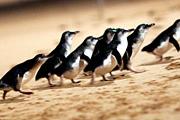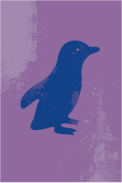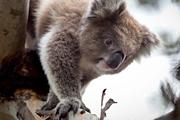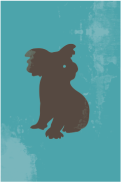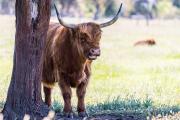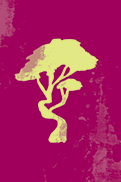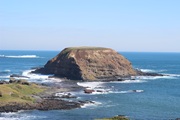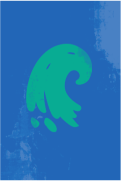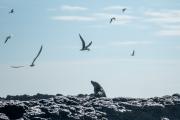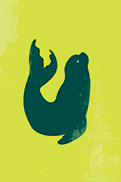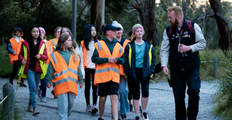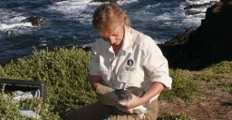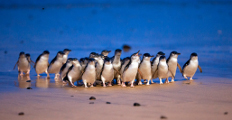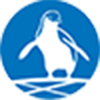Know Your Nature Parks - Winter 2025
Winter is the time to rug up, dust off your binoculars and take a brisk beach walk searching for humpback whales, Southern right whales and spectacular seabirds such as albatross. Huge ocean swells and some of the highest tides of the year make our beaches dynamic places. The rain is welcome, and we watch the landscape return to green as the natural environment is replenished.
In The Skies – Birdlife
Hooded plovers
The 2024-25 breeding season was another strong year, with 13 hooded plover chicks fledging from 17 breeding pairs. Breeding success is measured by the fledged per pair rate, which has been trending upwards over time. This season’s rate reached 0.76, well above the BirdLife Australia target of 0.5. Of the fledged chicks, 12 were banded with yellow leg flags engraved with individual letter-number combinations. Several of these birds have already been sighted off-island along the Bass Coast and Mornington beaches.
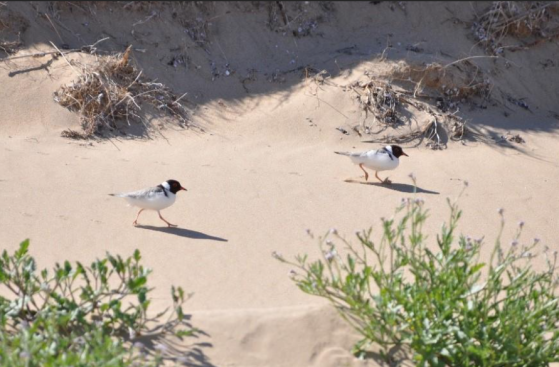
Image 1: Hooded plovers on the beach.
In The Water
Little penguins
Breeding success of little penguins on Phillip Island (Milawul), is measured through regular monitoring at seven study sites across the Summerland Peninsula, where breeding pairs and their chick-rearing success are closely recorded. Success is measured as the number of chicks raised to fledging per pair, with a long-term average of one chick per breeding pair.
The 2024-25 breeding season began unusually early, with most little penguin pairs laying eggs in July and August 2024, nearly two months ahead of the long-term average. However, reduced adult weights recorded in September pointed to difficult conditions at sea. Many adults were forced to spend extended periods foraging, returning less frequently and with limited food for their chicks, which contributed to widespread first clutch failures.
Fortunately, the early start to the season allowed time for successful second clutches making up for initial setbacks and resulting in an overall breeding success of 1.09 chicks per pair. This represents an average breeding success for the colony and is a strong outcome considering the challenging conditions earlier in the season.
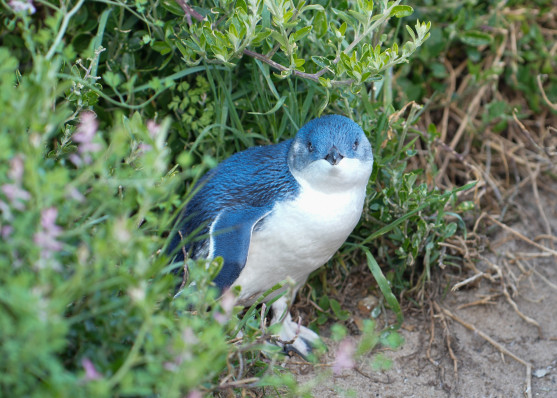
Image 2: A little penguin at burrow entrance
Research at Seal Rocks
Jessalyn Taylor, PhD Candidate at Sydney School of Veterinary Science, demonstrated that loud motor vessel noise disrupted the normal behaviours of Australian fur seals at Seal Rocks and that recreational boats frequently move too close. Under the Marine Mammal regulations (2019), vessels going to Seal Rocks are required to stay 60 m away from the seals unless on a permitted tour vessel and jet skis are defined as prohibited vessels and must stay 260 m away from Seal Rocks.
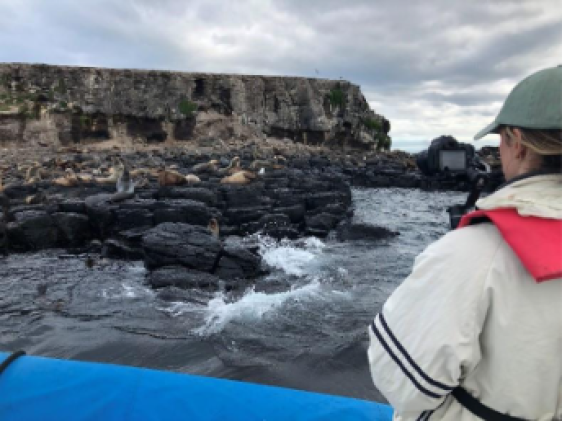
Image 3: Jessalyn performing noise experiments at Seal Rocks
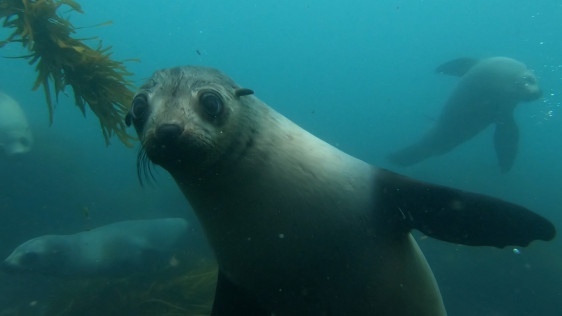
Image 4: Australian fur seal
On the land
Eastern barred bandicoots on the move
In March 2025, Eastern barred bandicoot (EBB) trapping was undertaken across Churchill Island, Fishers Wetland and the Summerland Peninsula. Body condition was predominantly average across all sites, with no pouch young observed, as is expected for this time of year.
Across the two trapping sessions volunteers contributed a massive 452 hours over seven days, assisting with trap setting, research assisting, EBB handling and free feeding. New volunteers were welcomed to the team, and dedicated long-term volunteers continued to receive training to develop their technical and animal handling skills.
Bandicoots continue to slowly spread across Phillip Island (Milawul), with an increase in sightings around Cowes and Rhyll in the last six months. Community can contribute to tracking their spread by reporting sightings on our bandicoot sightings portal.
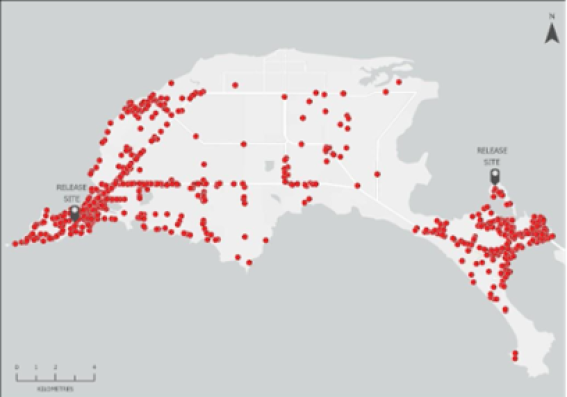
Image 5: Eastern barred bandicoot distribution May 2025
This winter we celebrate the 10-year success of the Eastern barred bandicoots’ translocation to Churchill Island - a move that literally brought the species back from the brink of extinction.
The Eastern barred bandicoot was first introduced to Churchill Island in 2015. Prior to that, the species had been largely wiped out on the mainland, only surviving within three reserves in Victoria surrounded by predator-barrier fences.
Bush stone-curlews — adjusting to island environment
Phillip Island (Milawul) has become a key recovery hub in Victoria for Critically Endangered bush stone curlews. The newly reintroduced curlews underwent health checks in May and despite losing some weight as they adapt from free feeding in captivity to foraging for themselves in the wild, they are clearly finding their insect prey and settling into their new environment. The project team expects the birds will take some time to adjust to the island environment. The team continues to monitor the curlews closely and adapt tactics as data is collected through the trial.
Since the first release in August last year, several birds have been lost, which was a sad outcome, but not unexpected. The survival rate of 67% at the end of June 2025, is within the parameters set in the translocation plan but highlights that the main threat to the birds is road strike followed by suspected predation by cats and dogs.
You can help the curlews by slowing down when driving, particularly at dusk, dawn and during the night when the birds are most active. Report sightings on the Victorian bush stone curlew project at inaturalist.org or by emailing community@penguins.org.au
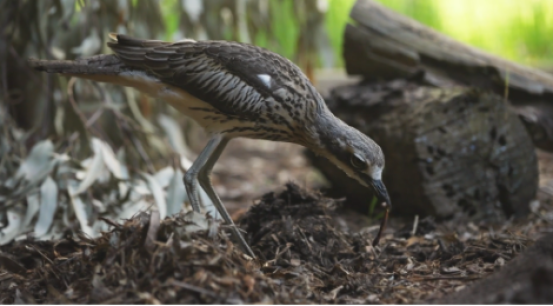
Image 6: Bush stone-curlew foraging.
Wildlife Rehabilitation Centre
From wallabies to wedgies
From January through to April we had 420 wildlife calls to the Wildlife Rehabilitation Centre made up of 40 species with over 130 little penguins being rescued over the four-month period. Alongside little penguins, we saw pelicans, gannets, gulls, echidnas, Eastern barred bandicoots, wedge-tailed eagles and many more species coming through the Centre.
Despite the shifts in temperature over the winter, the island is still relatively dry, and you can continue to help wildlife by leaving water out. If you are concerned about an animal, you can contact Wildlife Victoria’s Emergency Response Service 24/7 on 03 8400 7300.
Success stories
Five juvenile gannets were transferred from the Melbourne Zoo's Marine Response Unit for rehabilitation. These birds often need to be taught how to eat fish on their own, eventually being able to ‘catch’ fish when it is tossed into the sea bird pool at the Rehabilitation Centre. All five gannets have since been released.
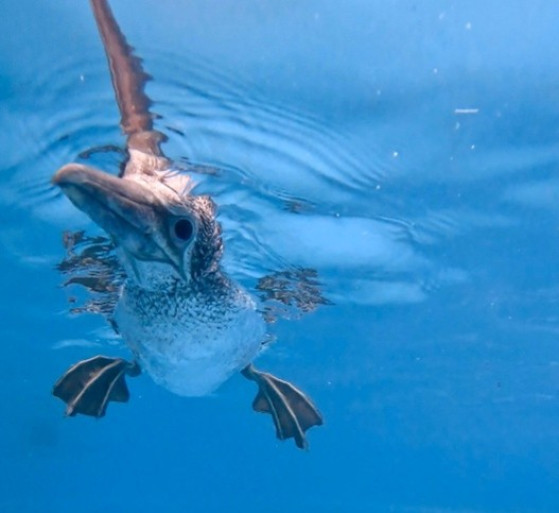
Image 7: A gannet swimming in the sea bird pool at the Wildlife Rehabilitation Centre.
Keeping wildlife wild
The greatest thing you can do for wildlife is to keep it wild. Please always maintain a safe distance and remember how lucky we are to be able to share our beautiful island home with a diverse range of native wildlife.
Subscribe to our Conservation News for more in-depth coverage.
For the locals and visitors
The Nobbies Centre and boardwalks
The Nobbies boardwalks and car park are now open.
The views, blowhole and the excitement of whale watching are the main attractions at this incredible site, and we hope to see both visitors and the local community enjoying this rugged coastline throughout the whale season.
Engineer inspections have confirmed it is not safe to re-open the building therefore it will remain closed while we undertake further planning.
We're about to commence consultation for the updated Summerland Peninsula Master Plan and we’ll be seeking the views of visitors and key stakeholders on the future of the Nobbies site. We want to ensure any further investment in the Nobbies facility helps to achieve the community’s long-term aspirations for this site. More information about the Summerland Peninsula Master Plan is available here.
The Penguin Parade will be the primary visitor hub for the peninsula, so on the way to soak up the views at the spectacular Nobbies boardwalks, visitors can stop in at the Penguin Parade Visitor Centre, open from midday each day, to pick up a hot beverage and to access bathroom facilities. Public toilets are also available at the Penguin Parade car park.
The Boulevard, running along the South coast of the Summerland Peninsula, between the Nobbies and the Penguin Parade, remains open for daytime access.
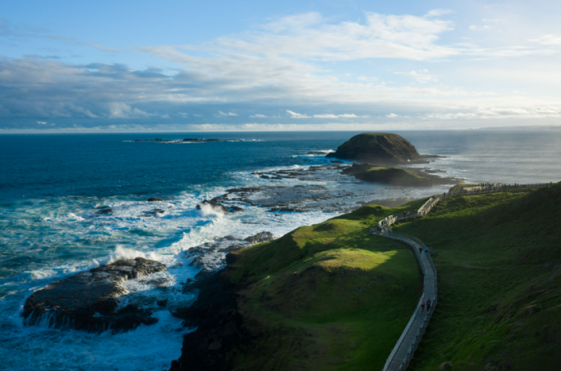
Image 8: The Nobbies boardwalk open for Victorian school holidays
Forrest Caves
Forrest Caves parking, amenities and beach access remains closed as we complete the final stages of construction of the new beach stairway. We plan to reopen the site for public access in September 2025. Access to the beach is currently available via the Bruce Avenue access track.
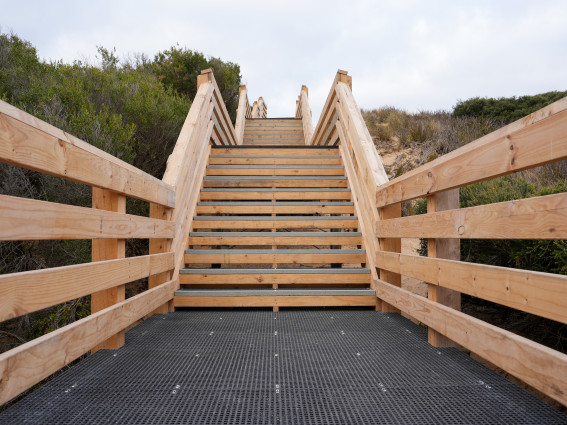
Image 9: Forrest Caves beach stairs under construction in May 2025.
Cowes-Rhyll trail
The Phillip Island Nature Parks and Bass Coast Shire Council worked in partnership to upgrade the Cowes-Rhyll trail to provide a safe and accessible shared path between the two townships. The section of trail between Conservation Hill car park and McIlwraith Road in Rhyll has been upgraded as part of Stage 3 of the project and can now be enjoyed by locals and visitors.
Penguin Parade boardwalk and stand redevelopment project
Stage 2 of this major project is currently underway and will replace the existing ageing boardwalk behind the General Viewing stands. This will provide an accessible boardwalk, and improved viewing experience for visitors. This stage of the project is due for completion by December 2025.
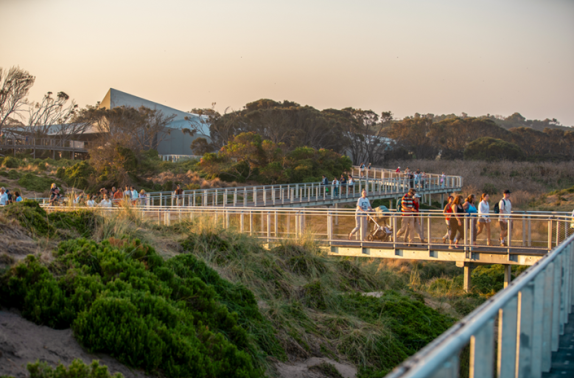
Image 10: A section of completed Penguin Parade boardwalk from Stage 1 of the project.
There are several upcoming projects across the coastal reserve network, and we’ll share details on those projects in the next edition.
We’d love to see your images of the Nature Parks
Don't forget to share your images of the Nature Parks with us by using our hashtag #PhillipIslandNP





